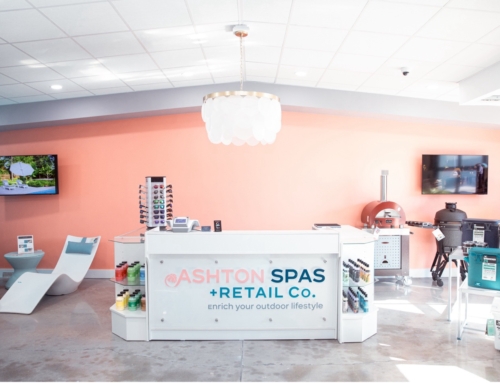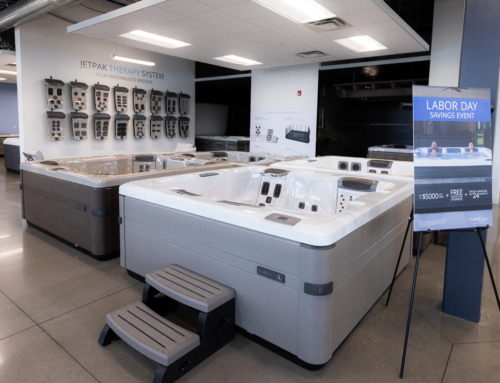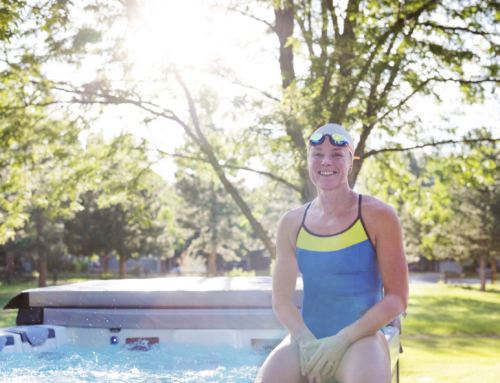Over the past 10 to 15 years, trade-in programs have become a popular component of the hot tub industry. Even so, many dealers remain skeptical when it comes to selling used hot tubs, which is understandable when you consider what the trade-in process entails. However, dealers who commit to best practices when accepting used spas as trade-ins and when selling the reconditioned spas to customers, find trade-in programs to be a lucrative addition to their retail stores.
Appraising the Situation
When it comes to appraising a used spa, dealers must consider both their business and their customers. They have a responsibility to themselves in terms of profit and a responsibility to their customers in terms of fair price. In order to meet these responsibilities, dealers must conduct a thorough inspection of the used spa before accepting it in trade. So, what should you look for when inspecting a used spa?
- Make
- Model
- Year of manufacture
- Surface wear and tear
- Pump, motor, and jet function
- Electronics
Larry Jones, owner of Hot Spot Pools, Hot Tubs and BBQ of Liberty, MO tells Spa Retailer “Our policy is to visit the customer’s home; we want to see the unit running.” This way they can see if the tub has been frozen or if any leaks exist before they incur the expense of hauling it to their service center. Obviously, high quality, well-cared for spas have a higher profit potential. Other things you’ll need to consider at this stage are the original purchase price, past maintenance work, and the cost to recondition the unit.
Bryan McClain of Vaughan Pools & Spas in Sedalia, MO says value “varies on the age of the spa. Most spas over 10 years old we give $250 to $500 for trade. Older or non-working spas we charge to haul off, or in the new spa sale we offer to “haul away for no charge. Usually we know the spa so we ‘appraise’ that way. If we do not know the spa or customer, we ask for pictures and description of the spa’s condition. We do not generally take trades on other brands.”
The key is to walk the customer through your valuation process so they understand that you are offering them the best possible deal.
When you are ready to place a value on the trade-in, be transparent about how you came to that specific number. The key is to walk the customer through your valuation process so they understand that you are offering them the best possible deal. Treat them fairly and honestly during this trade-in process and, when they decide to purchase a new spa in the future, they’ll come back to trade with you again.
Update and Upgrade
The truth is that, in reality, most used spas are not in great condition and require repairs and upgrades for maximum resale value. For most dealers, reconditioning a used spa can involve the following tasks:
- Fill tub to check for leaks
- Remove and repair cabinet
- Fix leaks
- Order and replace jets and pillows
- Replace damaged, worn or, discolored items
- Replace topside and overlay
- Reinsulate
- Clean up exterior and paint bare wood
McClain says that “Any defective parts essential for spa operation and safety are replaced. We only replace with NEW parts – it is safer and the parts will have a warranty. All used spas get a new filter and chemical package. Covers are determined on condition – MOST get a new cover, but on some marginal covers we let the customer decide if they want to spend the extra for a new cover or use the existing.”
Once again, being completely transparent with what was done in the reconditioning process will build your credibility and increase repeat sales.
Selling the Pre-Owned Spa
Once you’ve placed the pre-owned spa on the showroom floor, be sure to let the buyers know what they are getting. San Juan Pools and Spas in Pekin, IL offers certified, pre-owned hot tubs that include:
- Full 30-point diagnostic inspection
- Warranty
- New filters
- Locking thermal spa cover
- 220V models usually include an electrical sub panel
- 110V models include a watertight receptacle cover
- Owner’s manual
- Complete water care chemical kit and/or in-home seminar
They also have delivery available at the customer’s request.
The Spa Guy, Billy Stallings, offers a standard one-year warranty on electronics, motors, pumps, and leaks, while Hot Spot Pools, Hot Tubs and BBQ includes 30 or 60-day warranties depending the model of the pre-owned hot tub.
Vaughan Pools and Spas in Sedalia MO offers “a 60-day labor warranty . . . on used spas. Any parts replaced come with the warranty for them – in most cases that can be 90 days to 1 year.
All used spas are shown for sale operating on the sales floor or backroom, so the customer knows the functions of the spa and that it works and there are no leaks or issues. - Bryan McClain, Vaughn Pools and Spas
This helps in the sale and the as-is limited warranty.” Customers will have more faith in reconditioned spas that come with warranties than just a plain, old used hot tub.
When it comes to pricing, McClain explains “how we normally price used units where the spa is sold for the price we gave for the trade-in and then all of the repaired and replaced items are sold at full retail along with the labor involved in dealing with the unit from pick-up, clean up, repairs, etc. For example, a used spa we gave $500 in trade is sold at $500 for the spa. But the new filter, chemicals, cover, repaired items, and the labor to do all of that is additional, so that ticket may be $1000-$2000 when done. Newer used spas generally can be marked up with the accessories and labor then added.”
Summary of Best Practices
You’ve probably noticed that the words “used,” “reconditioned,” and “pre-owned” have all appeared in this article. While they all mean essentially the same thing, already used by someone else, they are perceived differently by customers. When a dealer first sees a trade-in, he or she is looking at a used spa. Once the unit has been repaired and cleaned up, it becomes a reconditioned spa. Finally, when it is fully updated and ready for resale, it is a pre-owned spa. The point here is that one of the dealer best practices for spa trade-ins is accurate labeling of the product. Let’s review:
- Clearly explain your trade-in valuation process to the customer.
- Plainly identify what was done in the reconditioning process.
- Visibly display what the customer gets with a pre-owned spa.
Vaughan Pools and Spas typically only takes trade-ins of brands they have sold because “other brands are too difficult to get parts or support for. If we get one of another brand, it is because we gave nothing for the spa in trade AND we inform the customer purchasing that used unit that future service or parts for the unit may be limited.” Taking in only brands you sell ensures you are able to continue to effectively service the unit in the future.
Final Advice
Does taking trade-ins and selling used spas turn a profit? Bryan McClain has the answer, “We make good money on used spas – we get retail margins on all of the parts and accessories AND we cover the cost of the trade-in on the new unit. Generally we save the units to work on them in fall/winter so it keeps techs busy in winter and pays labor overhead.” So, are you ready to take in a trade-in or two?









Leave A Comment